The Japanese tea experience is rooted in tradition and culture. Each step and the tools selected to use all have a purpose. With all the different tea tools and teaware, you may wonder where to start your tea journey. Understanding the tea tools needed to prepare and enjoy your tea the right way will make all the difference in your tea experience.
The Importance Of Tea Tools
Tradition
Tea culture is significant in many places across the globe. In Japan, tea drinking is a cherished part of daily life that is considered an art. Each tea tool has a story and serves a special purpose in these calming moments.
At Mizuba Co., we cherish and highly respect the art of tea drinking. That’s why we stress the importance of having the right tea tools. We champion accessibility and recommend using what you have to start your tea journey. But, as you look to broaden your tea experience, it’s best to use tea tools specifically designed to make and enjoy tea.
Understanding why a chashaku is designed to scoop matcha, or how the fine tines of a chasen efficiently aerate matcha, ensures you will have the most delicious #MatchaMoment. If you’ve ever tried making matcha with a metal kitchen whisk, you definitely know what we mean. ;) Once you experience the difference in drinking matcha whisked properly with a chasen, you’ll never go back!
Quality And Aesthetic
As we said before, tea drinking is an art form. Your teaware should reflect that! Japanese tea tools have an undeniable elegance that is hard to ignore. Many are handcrafted using natural materials like bamboo, clay, and porcelain. Each tea tool is simple and functional but also aesthetically pleasing.
Tea Tools For Preparing Matcha
The necessary tea tools to prepare Japanese matcha tea are a chawan, a chasen, and a chashaku. These three simple yet beautiful tools may look too pretty to use, but you’ll actually find them quite approachable.
Chawan
A chawan is more than just a bowl. It’s specifically made for preparing and drinking matcha tea. When choosing the right chawan, be sure to consider the shape, size, weight, texture, and glaze. It should have an ample base or “floor” of the bowl to allow movement of the whisk, high walls for mixing without a splash, and the perfect curve for sipping without a spill.

There are hundreds of styles of chawan! Some are made by different firing methods (raku, for example), and some are even shaped specifically for enjoying matcha in different seasons. For example, a winter chawan will have a smaller, tighter shape for keeping your tea warm, while a summer chawan will be much wider to allow your tea to cool faster.
Quick Care Tip: After use, use the Mizuba Tenugui to wipe your chawan clean.
Chasen
This iconic bamboo whisk is essential in mastering matcha preparation. It's been used in preparing matcha for centuries, and they haven’t found a better tea tool yet!
Historically, a chasen is hand carved from a single piece of bamboo. The bamboo is first aged, and one end is split into fine prongs (our different styles of chasen range from 100 to 120 prongs — the most a whisk can have!) Using a chasen to whisk matcha creates the smooth froth we all adore by aerating the matcha powder.
Quick Care Tip: After gently rinsing with hot water, store your chasen upright and allow it to air dry in a temperate environment. Please do not use soap.
Chashaku
A chashaku is a serving spoon specifically for scooping matcha. Most chashaku are made from bamboo. Chashaku can also come in varying sizes and shapes, and some tea schools even commission different ways the scoop is carved just for their school. Chashaku are not standardized like teaspoons – therefore, it is possible to scoop large or small amounts of matcha.
To get a good idea of how many grams of matcha you enjoy, start by using a ½ teaspoon or one full teaspoon and see what works best for your tea experience. Get used to seeing this amount in your chawan, and then progress to using a chashaku to get a feel for scooping the perfect amount every time.
You can also use a sensitive gram scale to measure your tea and eyeball how much matcha you enjoy. Soon you’ll be able to use the chashaku with ease and know exactly how much matcha to scoop just by looking at it. A standard serving of matcha is about two grams, although, in Japan, servings can vary anywhere from one gram up to four grams (always reserved for koicha).
Quick Care Tip: Only wipe your chashaku with a cloth (like our Mizuba Tenugui) or paper towel—never use water!
Tea Tools For Preparing Japanese Loose Leaf Teas
When brewing loose leaf teas, a different set of tea tools are necessary. Ideally, you'll need a kyusu to steep your tea, a chasaji for scooping, and a chazutsu to store your tea leaves. Additionally, while not traditional, using a gram scale can vastly improve your tea experience.
Kyusu
A kyusu is a traditional, side-handled teapot used for brewing Japanese green teas. This style of pot is perfect for brewing loose leaf teas like sencha, tencha, kamairicha, genmaicha, or houjicha. Kyusu are usually made from ceramic materials like clay and porcelain. At Mizuba Tea Co., our kyusu are made from lead and cadmium-free ceramic, with a built-in ceramic strainer.
Like chawan, there are thousands of styles of kyusu! Our favorite kyusu tend to come from a historic area in Japan, famous for their ceramics – Tokoname. Tokoname is famous for its mineral-rich, porous clay, which allows the teapot to be seasoned over years of use – further complimenting the flavor of each cup of tea.

If you get deep into different styles of Japanese tea, you’ll begin to find teapots specialized just for brewing those types of teas. For example, you’ll find the taste of gyokuro is elevated when using a shiboridashi or houhin teapot. These pots are smaller and concentrate the flavor of the tea.
Quick Care Tip: Don’t use soap when cleaning your kyusu—a simple handwash with water will do!
Chasaji
There are many styles of these handcrafted spoons used for scooping loose leaf tea. It’s the perfect tool for getting a precise serving when preparing tea. Chasaji are commonly made from bamboo but can also be made from brass, copper, and various kinds of wood like (our favorite) cherrywood bark.
Quick Care Tip: Make sure to keep your chasaji out of direct sunlight and high humidity.
Chazutsu
A chazutsu is an airtight Japanese tea canister used to store tea leaves, keeping them fresh and dry. It’s important to store tea leaves away from light to preserve the aroma and flavor of the tea. Most chazutsu are made from wood or metal and are often wrapped in beautiful washi paper.
Quick Care Tip: Avoid leaving your chazutsu in humid environments, and gently clean with a soft cloth.
Try Out Mizuba Tea Sets
It’s time to elevate your tea experience! At Mizuba Tea Co., our tea sets include classic, handcrafted tea tools that will offer you the convenience and authenticity of a proper tea experience.
Mizuba Matcha Gift Set
This set is perfect for enjoying a #MatchaMoment! It's great for beginners and seasoned tea-lovers alike. The Mizuba Matcha Gift Set includes our traditional Chawan, our 120-prong Chasen Bamboo Whisk, and our signature House Organic Matcha green tea.
Enhance Your Tea Experience
Japanese green tea isn't just a beverage—it's an experience. Blending traditional practice and modern innovation, the people of Japan have mastered the art of creating the perfect cup of green tea. There are many tea tools available to help achieve this delicate balance.
If you’re ready to start your tea journey, be sure you choose the essential tea tools to elevate your tea experience. If you’re not sure where to start, just chat with us. We’d be delighted to help!


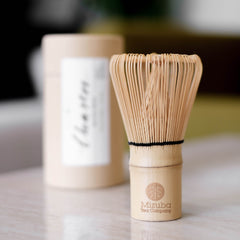
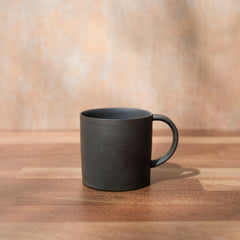
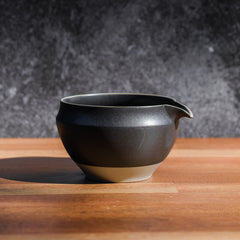
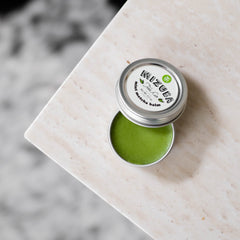
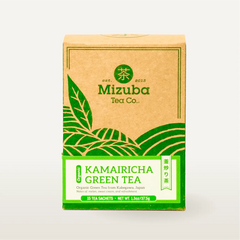






Leave a comment